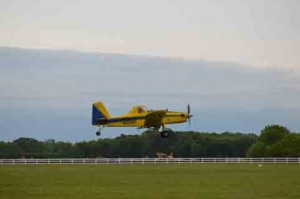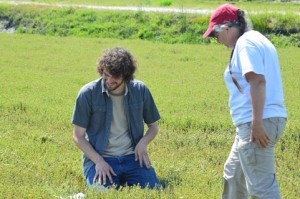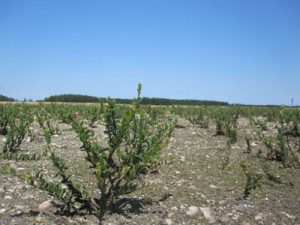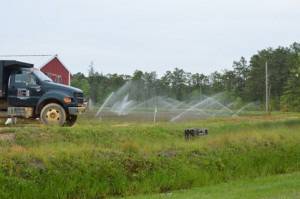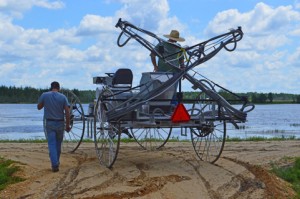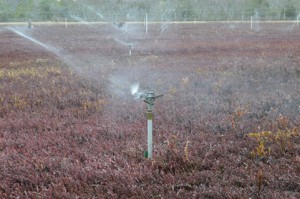Fertilizer applications are wrapping up next week (which means harvest is coming up quickly)! The amount of fertilizer we apply to each bed is determined by variety, soil conditions, and past practices, requiring constant evaluation of current conditions, history, and trends. Nutritional needs are also different for young vines as opposed to established plantings.
Additional nutrition is necessary because while cranberries have adapted (and thrive) in their native sandy soil, nutrients are taken from the bog through the harvest of fruit. “We’re at the roughneck stage right now for almost everything, and that means a lot of top growth as well as root growth, which in turn means the extra nutrition is necessary,” says manager Mike Haines. The three main elements usually added for nutrition are nitrogen, phosphorus, and potassium, and the team based their decisions on tissue samples, and last year’s yield. According to cranberries.org: “Cranberry plant demand for nitrogen is highest during three stages of the lifecycle critical to cranberry development–early growth, fruit set and bud set. Early growth is when the plant grows vegetatively through vining and root growth and produces a flush of new leaves. Fruit set is when the flower becomes pollinated and fruit begin to form. Soon after fruit set comes bud set when nitrogen is needed for both fruit development and production of the next year’s flower bud.”
In addition to aerial methods (as always, expertly done by Downstown Aero Crop Service) our team has also tried “fertigation” in past years: a uniform application via irrigation system.
However, our team decided to discontinue the practice back in 2017. “With our current irrigation layout, it’s just not a fit at this point,” says Mike Haines. Instead we tried our usual applications via a buggy method introduced in 2016, which made for more precise application.
Our team needs to make sure the conditions are optimal, as well: irrigating overnight when it’s hot and dry. “We want to get that water into the soil so the plants can access those nutrients,” Mike says.

